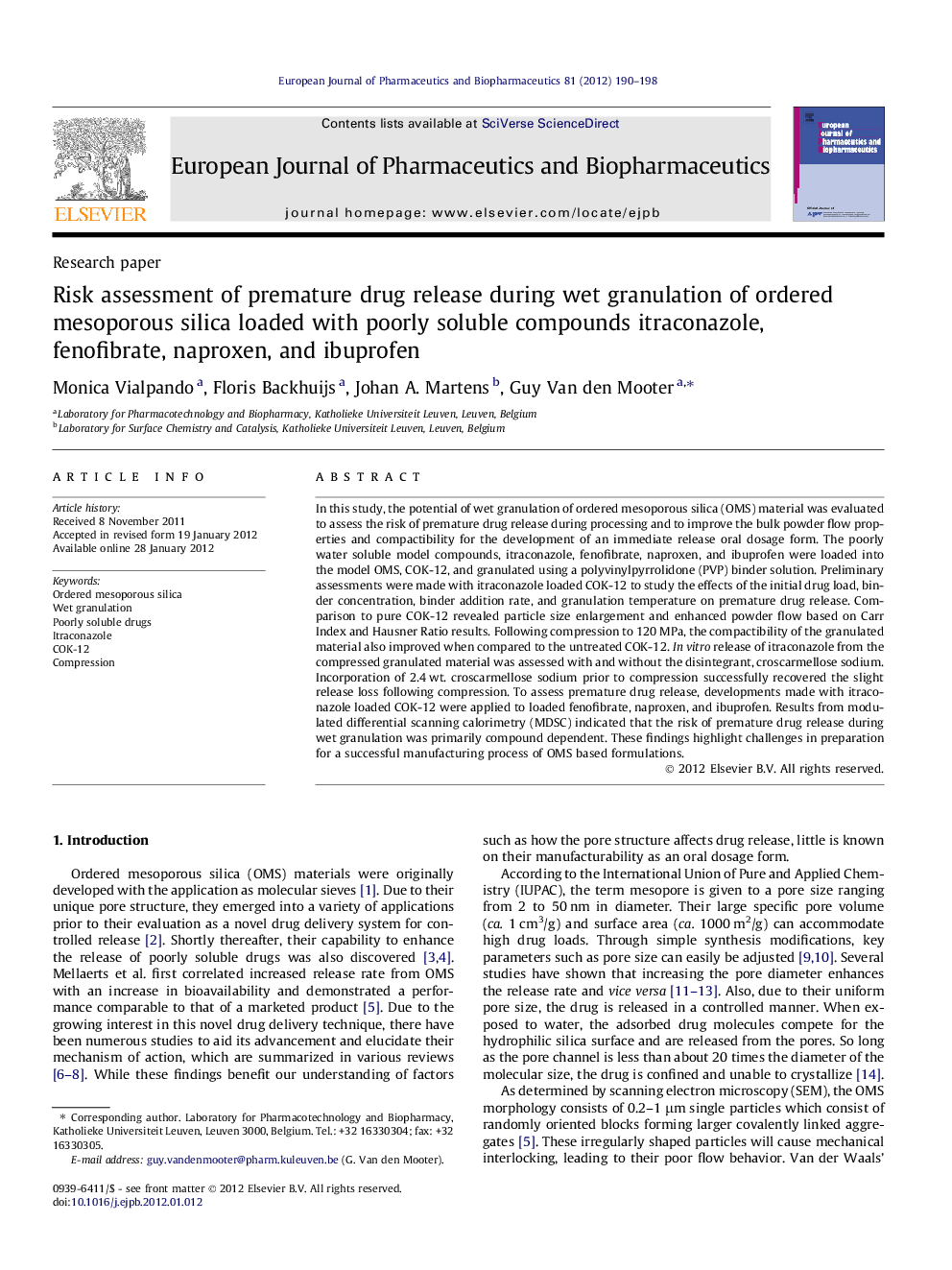| کد مقاله | کد نشریه | سال انتشار | مقاله انگلیسی | نسخه تمام متن |
|---|---|---|---|---|
| 2083778 | 1545361 | 2012 | 9 صفحه PDF | دانلود رایگان |

In this study, the potential of wet granulation of ordered mesoporous silica (OMS) material was evaluated to assess the risk of premature drug release during processing and to improve the bulk powder flow properties and compactibility for the development of an immediate release oral dosage form. The poorly water soluble model compounds, itraconazole, fenofibrate, naproxen, and ibuprofen were loaded into the model OMS, COK-12, and granulated using a polyvinylpyrrolidone (PVP) binder solution. Preliminary assessments were made with itraconazole loaded COK-12 to study the effects of the initial drug load, binder concentration, binder addition rate, and granulation temperature on premature drug release. Comparison to pure COK-12 revealed particle size enlargement and enhanced powder flow based on Carr Index and Hausner Ratio results. Following compression to 120 MPa, the compactibility of the granulated material also improved when compared to the untreated COK-12. In vitro release of itraconazole from the compressed granulated material was assessed with and without the disintegrant, croscarmellose sodium. Incorporation of 2.4 wt. croscarmellose sodium prior to compression successfully recovered the slight release loss following compression. To assess premature drug release, developments made with itraconazole loaded COK-12 were applied to loaded fenofibrate, naproxen, and ibuprofen. Results from modulated differential scanning calorimetry (MDSC) indicated that the risk of premature drug release during wet granulation was primarily compound dependent. These findings highlight challenges in preparation for a successful manufacturing process of OMS based formulations.
Excessive binder can prematurely extract the loaded drug from the pores of ordered mesoporous silica. The extracted drug located on the outside of the pores is identified by its bulk powder property as either a melting event or glass transition. The risk of premature release is compound dependent and not governed by solubility.Figure optionsDownload high-quality image (96 K)Download as PowerPoint slide
Journal: European Journal of Pharmaceutics and Biopharmaceutics - Volume 81, Issue 1, May 2012, Pages 190–198